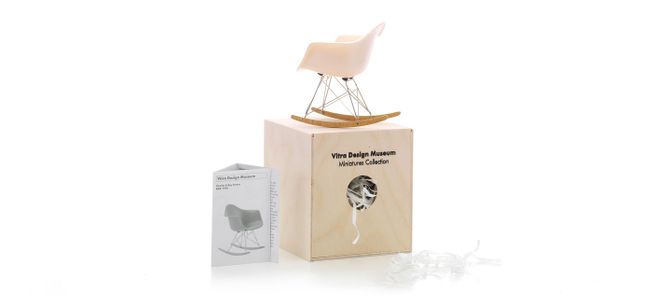
Miniatures Collection - RAR
Charles & Ray Eames, 1950
After years of experimentation, Charles and Ray Eames were able to realize their goal: an industrially produced chair that is inexpensive, sturdy, and comfortable. The Fiberglass Chairs come in several versions: with an A-shaped shell (armchair) or S-shaped shell (side chair) and on different bases, one of which is the famous »Eiffel Tower« base. Until 1968, Herman Miller also produced a rocking chair base. Every Herman Miller employee who expected a baby received it as a gift until 1984.
Miniatures Collection
Durante más de dos décadas, el Vitra Design Museum ha hecho réplicas en miniatura de las piezas más importantes de su colección. La Miniatures Collection es un compendio de la historia del diseño de mobiliario industrial, desde el Historicismo y el Art Nouveau hasta la Bauhaus y la Nueva Objetividad, desde el Diseño Radical y el Posmodernismo hasta nuestros días. Con un tamaño que es exactamente un sexto del de los originales históricos, las sillas son fieles a la escala y reproducen hasta el menor detalle de construcción, material y color. La autenticidad llega incluso a la veta natural de la madera y a la reproducción de los tornillos y las complejas técnicas artesanales utilizadas. Por este motivo, las miniaturas se han convertido en objetos de colección muy populares y en un material didáctico ideal para universidades, escuelas de diseño y arquitectos.